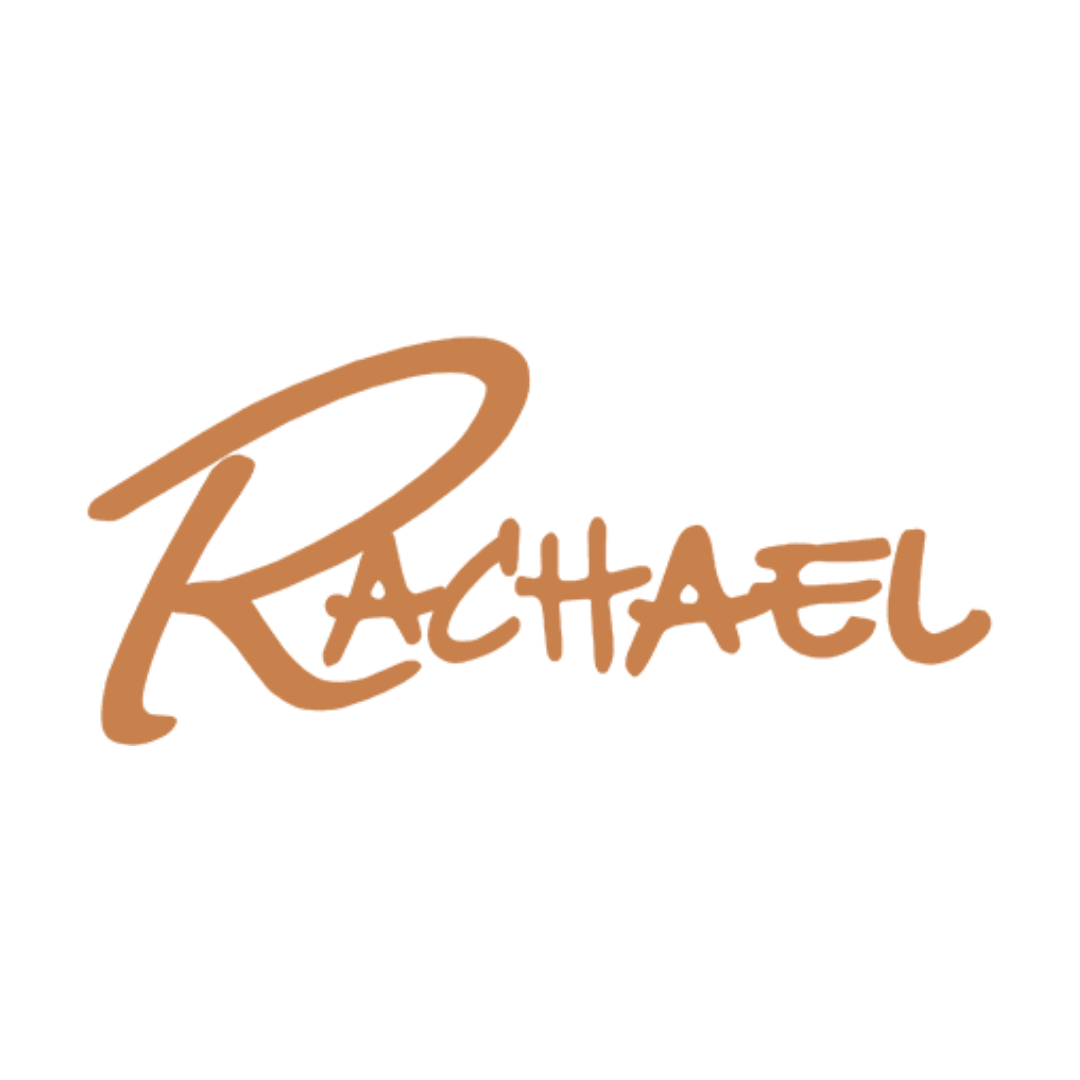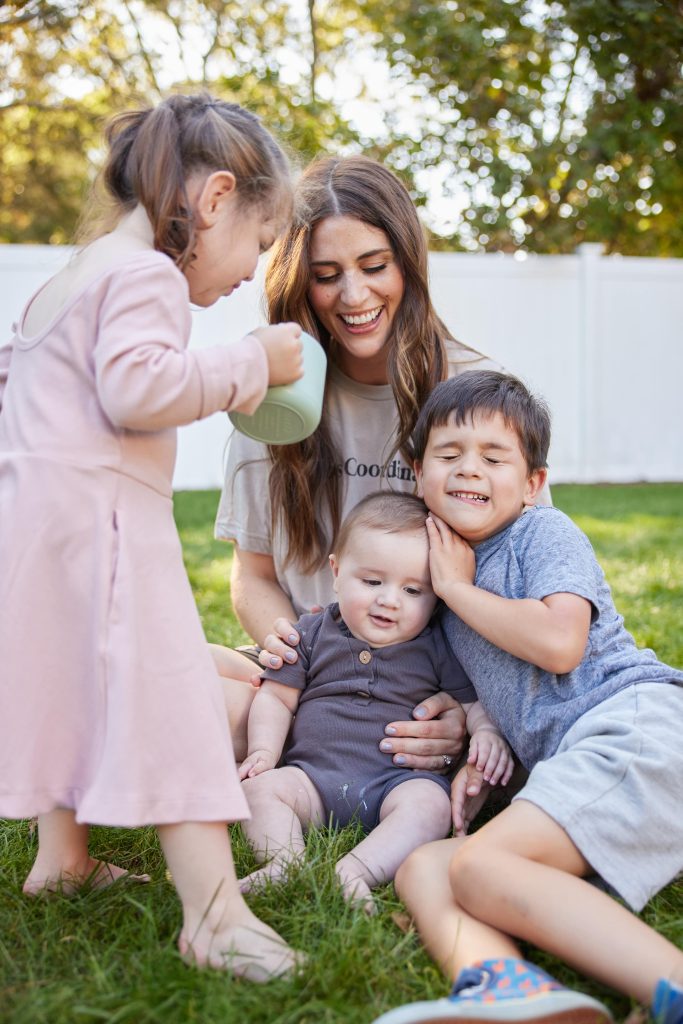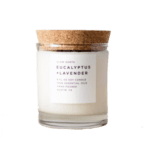
Let’s start by rewinding to about 1-1/2 years ago. My husband and I had just moved into a new rental property and decided we wanted this to be our last rental. Next move, we’d buy our forever house. Oh, and we wanted to start a family. Oh, and thanks to credit cards, car loans, and the ever lovely student loans, we had over $70k in debt. This debt was literally looming over us like a black cloud. We KNEW it was there but we didn’t really want to face it. It felt insurmountable and with our monthly bills, we thought we’d NEVER be able to pay it down.
But, we knew if we really wanted to save up for a house and start a family without debt looking over our shoulder, we needed to find a solution. We needed to find a way to change our lives, our spending, our budgeting, and pay off this debt. We sat down and made a plan to be debt free within 2 years. But, thanks to some dedication, a good budget, and lots of motivation, we paid off about 85% of it within the first 9 months. Now we’re saving for a house and preparing for our first baby without the worry of debt.
Now, let me say this wasn’t some overnight success or get rich quick scheme. We’re just average people who finally took the steps necessary to take financial control of our lives for the sake of our future. We had to accept where we were overspending and make some big lifestyle changes to make room in our budget to pay off debt. In this post, I’m going to share with you, step-by-step, how we made it happen.
Let me quickly preface this by saying everyone’s income, debts, and bills are different. You may make more money than me and have more debt, or have less debt but make less, or anything in between. It might take you less time to pay off your debt than us, or it might take you longer. The point is, you can make this guide work for you whatever your situation if you follow the steps.

Step One
Take a look at your spending
This can be one of the hardest steps. Typically we end up with unpaid debt because we’re not always smart with our money. We overspend. We justify payments and products and services we don’t really need. Even if we THINK we’re being smart with our money, if you have debt you can’t pay off there’s a good chance there are places your overspending and we usually, subconsciously, know it and don’t want to admit it. That’s why looking at those bank statements can be something we DREAD. We don’t want to face the truth on how much we spend.
But, let me empower you by saying you shouldn’t feel embarrassed by your financial mistakes. A lot of people make them. You’re not alone and this is not the end of the world. You can get out of the financial hole you’ve dug.
Organize all your spending over the last 6 months into categories
Get out your bank statements and credit card statements, because you are going to look at your spending over the last 6 months and break it all down by category. You can do this manually or make a small investment in a tool to help you. When we decided it was time to get serious about our finances we invested in Quicken. It connects to our bank account and credit cards and automatically pulls in all our financial data. It allows us to organize every transaction to a category and easily see at a snapshot how much we’re spending in each category. And, it also helps you set and track budgets (which we’ll get to in a later step). Certainly, you don’t have to pay for a product like this. You can go the DIY route, it’ll just take a little more time and elbow grease.
The point is, you need to look at the last 6 months and add up EVERY SINGLE DOLLAR spent and to what category it went it. Be specific with your categories, this will help in the next steps. The categories I suggest are outlined below but tweak/edit/remove/add to it to fit your lifestyle.
- Home
- Mortage/Rent
- Property Taxes
- Home Owner’s/Rental Insurance
- Home Maintenance
- Transporation
- Car Payments
- Car Insurance
- Gas
- Car Repairs/Maintenance
- Utilities
- Gas/Oil
- Electricty
- Trash
- Cable/Satellite
- Internet
- Cell phone
- Food
- Groceries
- Restaurants
- Fast Food
- Coffee shops
- Bars/Alcohol
- Medical
- Health Insurance
- Medical Payments
- Pharmacy Costs/Perscriptions
- Entertainment
- Radio/Music subscriptions
- Movies/TV subscriptions (like pay-per-view movies, Netflix, Hulu)
- Events, Tickets, Shows
- Personal Care
- Makeup/Beauty Prodcuts
- Hair/Nail Salon Visits
- Gym Memberships
- Other personal care products/services
- Children
- Daycare
- Clothing
- Extra-cirriculars
- Other
- Pets
- Vet Costs
- Food
- Pet Products
- Other
- This should be specific to you. Maybe you run a side hustle, then track that here. Maybe you have a hobby etc.
I’ve created a free money tracker you can use to make this a little easier. Click here to download the free money tracker.

Step Two
Analyze your spending
The next step is you need to take a good hard look at all this spending now. This is why taking the time to organize it into the categories is so helpful.
First, you want to look at each category on its own. Which categories cost you the most every month? Were there any categories that were lower or higher than you thought they’d be. Identify your biggest spending categories.
Second, look at each category on its own. Maybe you noticed that the food category is higher than you thought. What category inside of food is costing you the most? You might be surprised to see how much coffee shops costs you every month or to see how much money you spend on eating out, etc.
The point of this step is to really look at your spending and find trends. It allows you to identify the biggest culprits of your money loss every month. It also empowers you with the knowledge of knowing how all the little transactions over the month add up.
Step Three
Identify where costs can be cut
The first and easiest thing you can do it find any obvious places you can cut costs immediately. This could be things like monthly subscriptions you’re not using or don’t need, canceling cable, downgrading a product or service, etc.
If you need some inspiration, I shared a post with 10 things I cut from my budget that I don’t miss AT ALL. Certainly what I cut from my budget will be different than yours since we all have different lives/priorities, but it should give you some inspiration of where to look for those little hidden costs you don’t need in your life.
Step Four
Make a Plan to Tackle Your Biggest Money Losses
After looking at your spending categories you should have a good idea of 2-4 categories where you’re spending too much. You need to make a goal to cut this down. The goal here is to create some surplus every month you can use towards debt.
Often we get stuck not paying off debt because we believe we’re already “living paycheck to paycheck.” I know my husband and I thought this. But I almost always find by closely analyzing your monthly spending everyone can find places where they can save. It often requires cutting back, making sacrifices, and giving up certain things, so it’s sometimes hard to admit or face. But, these steps are necessary if you truly want to take control of your finances. And, I can tell you from experience that giving up some of these things seems like a big deal at the time but within a month or two you stop missing them.
So, identify the categories where you’re overspending, and aim to cut the spending in these categories down so you can use the saved money towards your debt. Some of this may be as simple as creating a monthly budget for a specific category (which we’ll talk about in the next step). In other instances, it might be a little different and require some lifestyle changes.
Maybe you realize your transportation costs are very high between your car payment, insurance, and gas. Did you purchase a car that’s frivolous and has a high monthly bill? Does it guzzle gas and you drive 90 miles round trip to work every day? You may need to consider selling your car and getting something more practical.
Or, maybe you realize you’re spending a lot on shopping. I got a lot of questions in IG Stories about how to stop overspending on “fun” shopping and so I wrote an entire post on How to Stop Overspending. But, a quick suggestion is to identify if you’re overspending on shopping for products/things and then make a goal to cut that back each month. Try to cut it back by 20% one month, then 20% again another month. Another tip that worked for me was to try a “no buy” month. It can help you break your shopping habit. You almost always find that the following months after a “no buy” month you spend less than usual because you’ve sort of reset your shopping habit.
Or, are you spending a large chunk of money on going out to eat for dinners and weekend plans? Dining out can add up very quickly. You may need to shift your lifestyle to accommodate eating out less. If you were eating 6 meals out a week, try cutting it down to 3 and then 2. Force yourself to cook at home more, invite friends over instead of meeting at a restaurant, etc. This can feel difficult at first, but when you stick to it it’ll become easier. You’ll actually find you enjoy time at home more and more as you shift your life to spend more time there. I actually wrote an entire blog post all about why you should stay home more often, if you need some inspiration.

Step Five
Create a Budget
Now that you know what you’re spending and where you need to cut costs, it’s time to create a budget. I have an entire blog post about setting a budget you can stick to, but I’ll outline the basics here.
Your budget should be category based, just like we did in step one. You should have a set amount to spend for each category. Some of these things are set in stone (like your mortgage or rent, insurance, etc.) Some of these things vary every month so you need a solid estimate (which is why step one is also so helpful). This is the point where you want to look at the places you’re spending too much and dial it back. Giving yourself a maximum amount to spend on specific categories for each month will help hold you accountable. This is the key to maintaining your budget and finding success.
Obviously, if your goal here is to pay off debt, you want to be factoring in a surplus each month to do this with. Say your net income each month is $2,500, you want to set a budget that doesn’t surpass $2,000 or $2,200 (these numbers will vary on your specific situation) so that you can use that extra $500 or $300 towards your debt each month.
Tips for setting your budget:
- Be realistic: If you currently spend $500/month on groceries don’t say you’re going to only spend $250/month right off the bat. You need to set yourself up to succeed with this budget and unrealistic goals won’t get you there. Start by trying to cut back to $450/month and then $300 the next month.
- Be specific: Setting your budget by specific categories is very important. Being too general will make it hard to stick to your budget and track if you’re doing well or not. For example, don’t say you’re going to spend $450 on food for the month. Break this down. Say it’s going to be $25 for coffee shops, $50 for lunches out, $250 for groceries, and $125 for dining out. This will make it much easier to track and stick to. At the end of the month, you’ll be able to look back and see if you overspent in the food category, which subcategory of food is it coming from.
- Check-in every week: At the start of a new budget, I suggest you check-in EVERY SINGLE WEEK. Look at what you’ve spent in each category thus far and see if you’re on track to stay within your set budget for each category for the month. After a few months, you’ll get better at this and will only need to check monthly.
Step Six
Tackle One Debt at a Time
Instead of trying to pay a little bit on each debt each month, I suggest the Debt Snowball technique. The way this works is you tackle one debt at a time and then take the savings from each one and snowball it into the next one.
Here’s how it works:
Take stock of all the various debts you want to pay off and list them from smallest to largest. You’re going to start by making minimum payments on all your debts except the smallest. Pay as much as possible on your smallest debt until it’s completely paid off. Then, you’re going to take what you were paying towards that first, smallest debt and use it plus your monthly surplus towards your second smallest debt. And so on. Repeat until each debt is paid in full.
Let’s say for example you have four debts to pay off:
- Car Loan ($15k with a monthly minimum payment of $150)
- Student Loan #1 ($40k with a monthly minimum payment of $115)
- Credit Card #1 ($2k with a monthly minimum payment of $40)
- Credit Card #2 ($5k with a monthly minimum payment of $78)
Using the debt snowball method, you would make the minimum payments on everything except the lowest one, the Credit Card #1. And, for this example, let’s say you have an extra $400 each month from step five (above).
Since you’re paying $440 a month on the credit card #1 bill (the $40 minimum payment plus the extra $400), that debt will be done in just over 4 months. You would then take that $440 and attack the credit card #2. You can pay $518 on that card each month now, (the freed-up $440 plus the $78 minimum payment). So in another 10 months, you’ll be credit card debt free! Now you move onto the car payment, which you can now hit with $678 a month (the freed-up $518 plus the $150 minimum payment)…and so on. Get the gist? You snowball each payment into the next so each time you can pay more and more off!
Note: I want to make a note here about my own journey paying off debt since, obviously, my husband and I paid off a lot ($70k) in a single year. We were able to be super aggressive because of two things.
1. We were very aggressive in Step 4. We were willing to make a lot of lifestyle changes so we had a larger surplus each month we could use towards our debt. You will have to decide what sacrifices you’re able and willing to make.
2. I work a full-time job AND have my side hustle of this blog/YouTube channel. This second revenue stream allows me to bring in extra cash every month which we used almost exclusively towards our debt (which in the past we used for more “fun” things.) I took on more work than I usually do in my side hustle last year to further increase this extra income. If you are able/willing, taking on a second job or freelance work temporarily while paying off debt it can be a HUGE help to pay it down more quickly.

Answering Your Questions about Paying Off Debt
You guys asked me SO many amazing questions on IG Stories about paying off debt. Many of them will become their own posts like budgeting in college, how to stop overspending, etc. But, here are some of the FAQs that pertain directly to this post of paying off debt and cutting costs.
I need to cut back on groceries. Any tips for grocery shopping on a budget?
Heck yes! It’s easy for grocery bills to get out of hand. It’s the one bill in our household that often needs to be kept in check. My husband and I work mainly from home so we eat almost every meal at home. It’s easy for the grocery spending to start to rack up. Luckily, I have shared grocery shopping hacks in the past that are all about how to save the most money when grocery shopping that will help you out in that department.
Any tips for still having fun and doing things without ruining your budget?
Heck yes! You still need to enjoy your life. I shared a post recently all about ways to treat yourself without ruining your budget which should give you some good ideas. But, overall I say it comes down to balance. If you’re currently spending A LOT of money each month entertaining yourself and going out, you will need to learn to cut back and find less expensive ways to occupy your time. I always suggest a hobby that will take up time in your week so you have less “down time” to feel bored (boredom always leads to spending money.) Maybe take up a craft, start blogging, get into a workout routine, make a hiking bucket list, etc.
Paying off debt is one thing, but any tips for PREVENTING debt?
Adopting a lot of the above steps will also help you prevent debt. But, here’s a quick snapshot.
1.) Know how much you’re spending every month. This will allow you to keep tabs and make sure you’re not overspending anywhere. It allows you to catch any overspending before it becomes out of the hand.
2.) Have a budget and stick to it.
3.) Use cash. Really, this is the best method. My husband and I now don’t buy pretty much anything unless it’s in cash. If we have a big purchase, we put away for a few months to buy it as opposed to putting it on a credit card and paying it off. This is really one of the best ways to avoid debts altogether.
How do you pay off debt when you’re already living paycheck to paycheck?
When my husband and I first started paying off our debt we also thought we were paycheck to paycheck, but the truth was there was wiggle room in our budget we just have to find it (or make it.) Some of it required lifestyle changes like not eating out, cutting back on spending every place we could (we did a no spend month one month to help us jumpstart this), and basically making small sacrifices here and there that slowly ended up paying off for us. Some of them were hard things to give up, but we knew they were temporary until the debt was gone.
Once we really started looking we were able to find places to cut from our budget. Even if it was $10 each month, we did it. In the long run, all the little tiny things help to add up. Like I mentioned before, I have a post 10 things I cut from my budget that I don’t miss AT ALL, you can check out for some inspiration.
And, of course, like I mentioned in my own journey if you have the means/ability to take on some second work or freelance work temporarily it can make a huge impact. I know not everyone has this ability, but I always mention it. Even if you agree to take a second job for 6 months, it can help jumpstart paying off debt and being your Debt Snowball as we talked about in Step 6.
I’m not living on a budget now, should I ease into it or just start doing it?
It’s a little bit of both. You should just start doing it as far as the first few steps of analyzing your spending and creating a monthly budget. However, for your budget, I always suggest easing into it. Like I mentioned above in the step about creating a budget, you want to set yourself up to be successful. If you were previously spending $500 a month going out to eat, don’t say that in month one you’re only going to spend $60. It’s too drastic of a change and will be hard to adjust to. Ease yourself into the budget by challenging yourself to spend $400, then $300, and so on.

WHOOSH! This was a MAMMOTH of a post but I’m so glad to finally have it all written out. I hope it helps to guide some of you to pay off your debts. We all have different situations and incomes and debts, but this general guide if you read it closely and follow it consistently, can help you find real success!
If I missed anything, you have more questions or requests, leave them for me in the comments below!
Also, on a side note I HAVE to share the maternity jeans I’m wearing in this post with you because good maternity jeans are like GOLD. These maternity skinny jeans are from PinkBlush and are so comfortable. They have just the right amount of stretch you want with a growing belly, but I love that they still look like normal, stylish jeans.


























